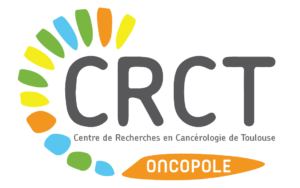Plasma concentrations of endoxifen, the main active metabolite of tamoxifen, show large differences between individuals due to genetic and demographic factors as well as concomitant treatments.
This study evaluates the impact of genetic differences and other medications on concentrations of tamoxifen and its metabolites. using a mathematical model (population pharmacokinetic analysis) based on prospective 3-year follow-up of 928 patients receiving tamoxifen treatment for breast cancer.
Cytochromes P450 (CYP) are a group of iso-enzymes located mainly in liver cells. Through their action they facilitate the transformation of drugs, making them easier to eliminate in the urine. Cytochrome P450 2D6 (CYP2D6) participates in the oxidative metabolism of 25% of commonly prescribed drugs (antidepressants, neuroleptics, weak opiates, antiarrhythmics), and has a marked genetic polymorphism (nearly 80 alleles described) as well as interethnic variability. In this study, it was shown that the CYP2D6 phenotype, and the CYP3A4*22, CYP2C19*2 and CYP2B6*6 genotypes, concomitant treatments inhibiting CYP2D6, age and weight had a significant impact on tamoxifen degradation.
Simulation results derived from this PK model support an increased dose of tamoxifen in patients with impaired CYP2D6 metabolism, so that they can reach a median endoxifen concentration or antioestrogenic activity score (AAS) similar to that observed in normal metabolizer patients.
This mathematical model can be used as a tool to predict levels of endoxifen or AAS according to various patient characteristics, in particular CYP2D6 phenotype, and thus enable tamoxifen dose adaptation.
Discover the published article :
Clin Pharmacol Ther. 2020 Oct 12.doi: 10.1002/cpt.2077.
Model‐based Quantification of Impact of Genetic Polymorphisms and Co‐Medications on pharmacokinetics of Tamoxifen and Six Metabolites in Breast Cancer
Alicja Puszkiel, Cécile Arellano, Christelle Vachoux, Alexandre Evrard, Valérie Le Morvan, Jean‐Christophe Boyer, Jacques Robert, Caroline Delmas, Florence Dalenc, Marc Debled, Laurence Venat‐Bouvet, William Jacot, Nadine Dohollou, Chantal Bernard‐Marty, Hortense Laharie‐Mineur, Thomas Filleron, Henri Roché, Etienne Chatelut, Fabienne Thomas, Melanie White‐Koning
Key Words :
- Cancer,
- Pharmacogenetics,
- Population pharmacokinetics,
- CYP (cytochrome P450),
- metabolites
Contact :
Mélanie White-Koning, Fabienne Thomas
Team 14 « Dose individualization of anticancer drugs « (director Pr Etienne Chatelut)
Mail : melanie.white-koning@univ-tlse3.fr ; Thomas.Fabienne@iuct-oncopole.fr
Collaborations :
- The PHACS study (NCT01127295) was supported by a grant from the French Ministry of Health (PHRC 2009 #09-18-005). Alicja Puszkiel received a grant from French National Institute of Health and Medical Research (Inserm).
- Laboratoire de Biologie Médicale Oncologique de l’Institut Claudius-Regaud
- Bureau des essais cliniques (Clinical trials office) IUCT, in particular, Henri Roché and Florence Dalenc as principal investigators of the PHACS study
- IUCT clinical teams and 25 hospitals of South West region of France
One picture :
Simulations of steady-state trough endoxifen concentrations according to CYP2D6 phenotype, CYP3A4*22, CYP2C19*2 and CYP2B6*6 genotypes and use of CYP2D6 inhibitors using structural and inter-individual parameter estimates from the final model (20 mg/day tamoxifen dose). For each combination, n = 1000 endoxifen concentrations were simulated. The simulated subjects have a wild-type genotype for CYP3A4*22, CYP2C19*2, CYP2B6*6 and no use of concomitant CYP2D6 inhibitors (reference) unless otherwise specified. For simulations, median population values of body weight (64 kg) and age (48 years) were used. The solid line represents the median plasma ENDO steady-state concentration observed in patients with CYP2D6 NM phenotype, CYP3A4*22, CYP2C19*2, CYP2B6*6 non-carriers and no concomitant intake of CYP2D6 inhibitors of 40 nmol/L. The dashed line represents the previously proposed plasma endoxifen therapeutic threshold of 16 nmol/L.


